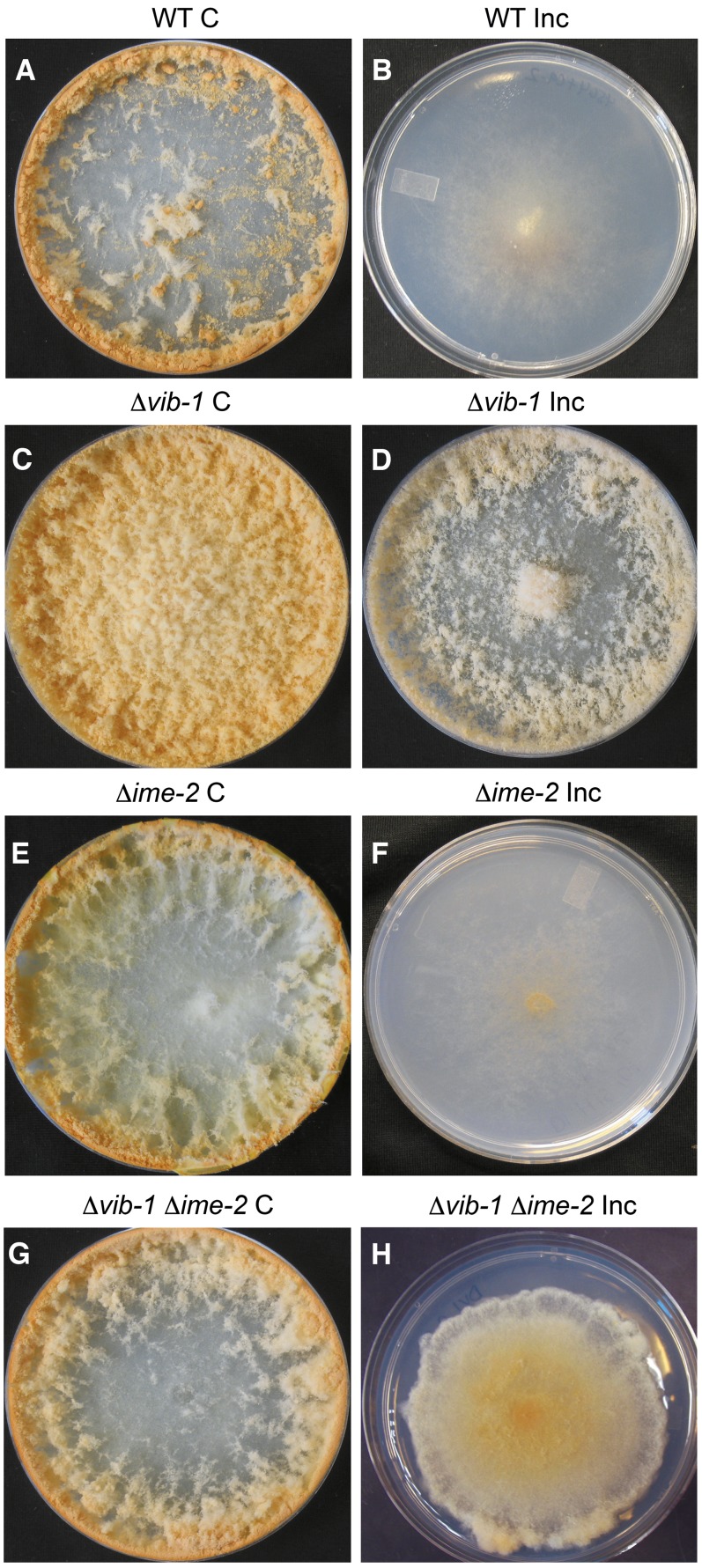Figure 2 .
A deletion of ime-2 partially restores HI in Δvib-1 mutants. Heterokaryons of identical het-c pin-c haplotype (C, compatible) show a growth and conidiation pattern indistinguishable from that of homokaryotic strains, including WT (A) (FGSC 4564 + R15-7), Δvib-1 (C) (KD13-21 + KD13-51), Δime-2 (E) (DI.PYR.4 + DI.HIS.10), and Δvib-1 Δime-2 (G) (DVI.HIS.48 + DVI.PYR.63) heterokaryons (Table 1). Strains carrying incompatible het-c pin-c haplotypes (Inc, incompatible) in a WT background show growth inhibition and suppression of conidiation (B) (FGSC 4564 + C9-15). Heterokaryons of incompatible het-c pin-c haplotypes, but carrying homozygous Δvib-1 mutations are similar in phenotype to compatible Δvib-1 heterokaryons (D) (KD13-33 + KD13-1). Heterokaryons carrying incompatible het-c pin-c haplotypes and homozygous Δime-2 mutations show typical HI (F) (DI.HIS.10 + DI.A.22), while heterokaryons carrying incompatible het-c pin-c haplotypes and homozygous for Δvib-1 Δime-2 mutations show partial restoration of HI (decreased growth rate and suppression of conidiation) (H) (DVI.PYR.63 + DVI.A.101).

